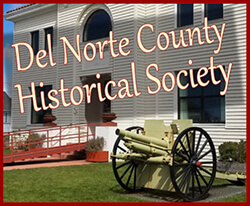About the Museum
The Museum houses two stories of displays, artifacts, and exhibits that bring to life the history of this section of Northcoast California. Among our wealth of interesting displays are rooms full of Native American artifacts, musical instruments, old radio, phonographic and photographic equipment, excellent needlework, early logging and mining tools and equipment, and many fashions and furniture from yesteryear.
The women’s section of the former jail is intact on the second floor and its cells hold various pioneer exhibits and a blacksmith’s shop. Other displays on the second floor include a dentist office, barbershop, military memorabilia, Chinese artifacts and a medical room.
The Bolen Annex, built in the early 1980’s houses the magnificent First Order Fresnel lens from the St. George Reef Lighthouse and artifacts salvaged from the wreck of the steamer Brother Jonathan, as well as a logging exhibit, a hand-carved miniature steam-donkey, mining equipment and ore samples, a railroad display and other interesting items.
Photo carousels and framed photos throughout the museum chronicle the historical visual representations of people, places, and events.
The Tolowa/Yurok room features our collection of local Native American artifacts, including one of the finest collections of baskets in Northern California. Its photo carousel comprises an evocative and informative history of the native people of the area throughout the nineteenth and early twentieth centuries. All photos have been donated by local families. There is also a room housing artifacts from other Native American tribes from all over the United States.
Photos of the devastation of the 1964 tsunami disaster are shown at the Museum. In the early morning hours of March 28, 1964, a series of five tsunami waves generated by a strong earthquake at Prince William Sound in Alaska, struck Crescent City killing 11 people, injuring 24, and destroying 29 city blocks. The devastation caused 7 to 15 million dollars damage and became the worst tsunami damage along this country’s West Coast in recorded history.
Business Hours
Spring/Summer Season
Mid-May through September
Monday- Saturday
10 a.m. to 4 p.m.
October through Mid-May
Mondays & Saturdays only
10 a.m. to 4 p.m.
Special tours and showings can be arranged in the offseason.
